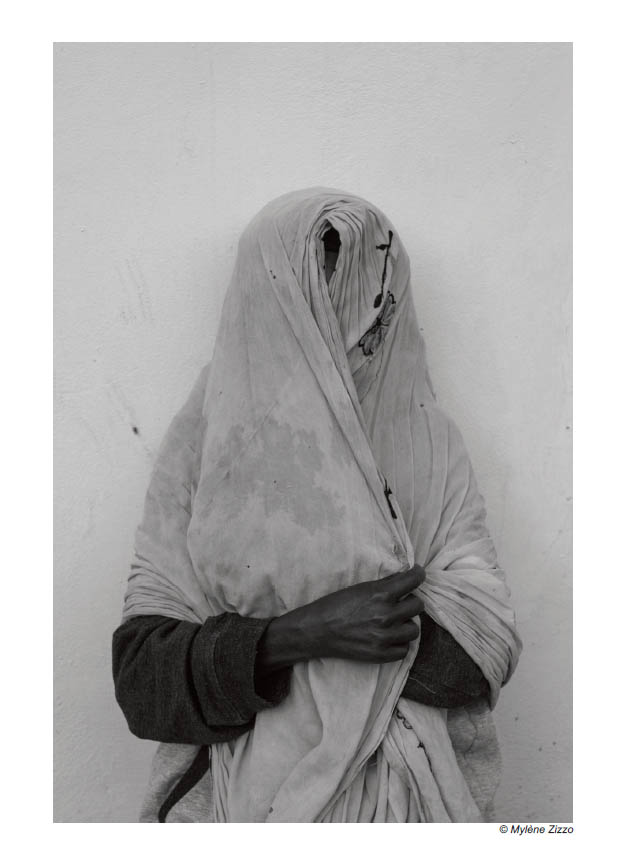This post is also available in:
 French
French
Ethiopia / Burkina-Faso – 2013
Faceless. The people in my photos are faceless in several ways: they are at the lowest rung of the social level and are often outcasts in their own communities, because they are the living proof of a curse on their families and their villages.
Faceless also because the illness devours their faces. Noma comes from the Greek numein, to devour.
They are born poor and bear the consequences of the associated poor living conditions. They are thus more fragile and vulnerable to all sorts of infections. Noma is not a well-known illness and its principal victims are even less well-known, living in isolated villages, where poverty, severe malnutrition and a lack of hygiene all contribute to its development.
Noma existed in Europe until the beginning of the 20th century, and some cases were even found in the death camps during the Second World War.
Even today, every day more than 400 children under six are affected by this disease which destroys their faces irredeemably. Only a few hours after the first symptoms appear with an inflammation which starts at the mouths and propagates rapidly, it is already too late! It destroys both soft tissue and bone. Noma victims must therefore before treated immediately; otherwise they have an 80% chance of death. The 20% who survive live on with severe disfiguration and important psychological trauma. The aid associations, who work principally in Africa, need support. Noma is certainly present in South America and Southern Asia as well, but no association exists there yet to help the children who die every day in general indifference. When I discovered Noma in 2012, I realised that the associations who work to help the victims of the disease show terribly shocking images on their websites. This does disservice to the aim of rallying the maximum number of people to the cause of combating this disease which is still taboo in Europe. I was already concerned by social and humanitarian problems in France and abroad, my work being concentrated on themes not generally treated by the mainstream media, so it seemed altogether natural that I should work on this subject. At the beginning of 2013 I contacted certain associations to help them communicate about their work, and so it came about that from March to May 2013 I had the opportunity to follow “Project Harar” in Ethiopia. This project aims to treat people suffering from facial deformations, often caused by illnesses, amongst which the Noma disease. I went on to cover “Sentinelles” in Burkina-Faso in November 2013. I decided to meet the sufferers and to showcase the work that allows victims to enjoy a destiny other than the one that their illness dictates. I bear witness to their courage and I also seek to highlight the work of the doctors who carry out reparatory surgery in the operating theatres. I want to give visibility to something that is hard to look at, raising the profile of Noma, but I want especially to educate the local populations in order to promote preventative action and to improve the treatment of the “little victims”.
As I was once told : “it is so great just to have something that looks almost like a nose, to be able to clench their teeth, open their mouths a little…that unfortunately they don’t always come back for the follow-up appointment several months later”. Most of them can, all the same, go back to their village with new perspectives because at last people will look at them differently. The people whose photos appear here are either miraculous survivors of the Noma disease, or else victims of other facial deformation afflictions.
Mylène Zizzo



